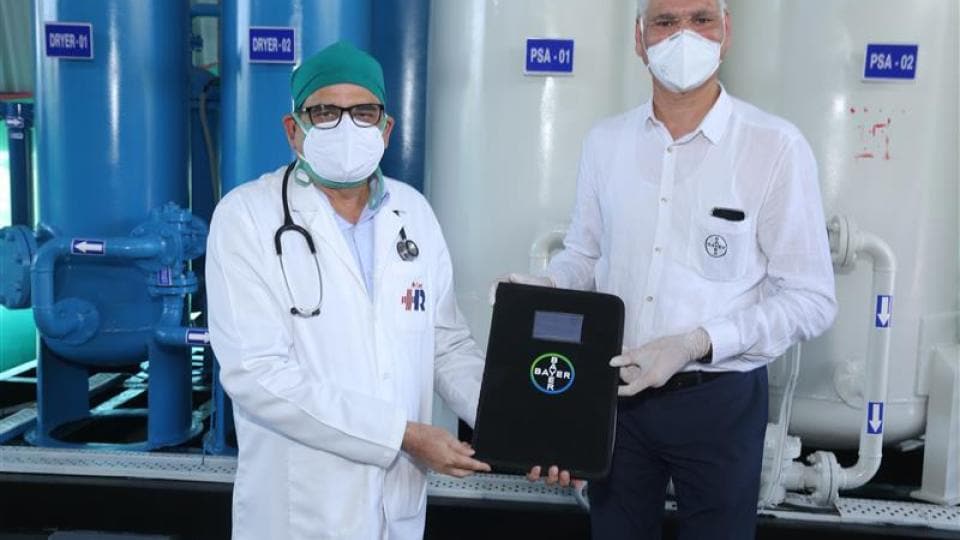How Europe can become a leading biotech hotspot

Despite its inventiveness, it still too rarely leads to the creation of innovative companies in Europe, concludes Marianne de Backer.
In the race to develop an effective COVID-19 vaccine, the innovative mRNA technology has both emerged as the clear winner and convincingly demonstrated the potential of biotechnology in healthcare to the world at large. But vaccine development represents only a fraction of what biotech can do today – and what it will make possible in the world of medicine in the future.
Combining biology and technology creates pioneering innovations that no longer merely treat diseases, but also have the potential to cure them. New technologies such as cell and gene therapies have huge potential in this area. This represents significant progress for many patients, but that’s not all – biotechnology also offers great potential for entrepreneurship. We need to exploit this potential to increase Europe’s economic standing.
Commercialize good ideas
It is clear from the fight against the pandemic that Europe has extensive expertise in the biotech sector. We can legitimately claim to hold a leading role. We have a diverse research landscape, and state funding of basic scientific research is excellent, with almost half of the world’s top 100 life science universities located in Europe. According to the Statista online portal, twice as many scientific papers relating to biotech are published in Europe as in the United States, with this figure rising to three times as many when compared to China. The Max Planck Institutes alone can boast 24 Nobel Prize winners among their ranks.
Europe is clearly a driver of innovation. The only missing element for harnessing this innovative strength in Europe are efficient structures. That is what hamstrings promising companies from emerging. Although we have plenty of inventiveness, successfully commercializing good ideas often remains a challenge. Here, Europe lags behind other parts of the world – especially the United States, the biggest biotech market, where the most recent annual sales figure was a good 135 billion dollars.
The situation doesn’t have to stay that way. I am convinced that Europe can become a biotechnology hotspot. For this to happen, we need to change key framework conditions. We need to celebrate success not just in research, but on the market, too.
More Californian flair
The unprecedented speed at which an mRNA vaccine was developed was only possible thanks to framework conditions that are not generally prevalent in Europe under normal circumstances. The pandemic acted as a catalyst, temporarily creating conditions in Europe similar to those found in Silicon Valley, with key partners from industry, science, politics and non-governmental organizations all uniting in pursuit of one goal – the fight against the pandemic. If Europe is to make the most of its huge potential in biotechnology, we need more Californian flair and, above all, a greater appetite for risk.
We should encourage young scientists with an entrepreneurial mindset to find the courage to leave their university research institutes and found companies instead. We need to support them – not least as a way of persuading them to stay in Europe. Cultivating a spirit of entrepreneurship, combined with a greater tolerance for failure, is essential.
We need more collaboration in Europe, too, and this is very much in patients’ interests. Cooperation between pharmaceutical and biotech companies, science and regulators is working better under the conditions of the pandemic than at any other time in history. It is now a case of making the most of this momentum and expanding it.
This challenge cannot be overcome in isolation – we need multilateral partnerships, especially between pharmaceutical companies and biotech businesses. I have so far been responsible for more than 200 alliances of this kind. Many of them have resulted in commercially available drugs, such as Odefsey, Symtuza and Juluca. At Bayer, too, we rely heavily on external innovation. During the past two years, we have entered into more than 30 partnerships in the pharmaceutical industry and acquired three biotech companies.
Investors, welcome!
None of this will work without risk capital and without being open to investors from outside Europe. We need to ensure that venture capital funds worth billions are used more frequently to finance innovative European companies, including in the biotech industry. The company Moderna, for example, grew out of an institute for basic research at Harvard University. This was made possible by specialized venture capital funds, such as Flagship Pioneering.
According to the latest German Biotechnology Report, only 3.9 billion euros of the funding for biotech companies came from venture capital in Europe in 2020. At the same time, European venture capital to the tune of 16.8 billion dollars went to the United States. In 2020, 84 biotech companies in the United States went public – compared to just two companies in Europe. This imbalance must be addressed.
We also need to develop better innovation narratives to persuade more investors to invest in European companies. This involves being more receptive to financiers from outside Europe. Investors from outside the European Union need a “clearance certificate” to hold a stake of 10 percent or more, and this is a major barrier to securing investment of urgently needed capital in the biotech sector.
The success of mRNA technology in the fight against the pandemic shows just what is possible in Europe when inventiveness is combined with the appropriate entrepreneurial framework conditions. We must now be resolute and take advantage of these opportunities. I am convinced that Europe has the potential to become a leading innovation hotspot. There is no doubt that biotechnology is part of our future – and not only in medicine. Let’s not waste this singular opportunity.





















